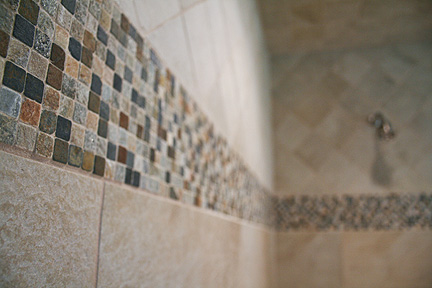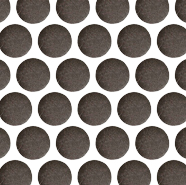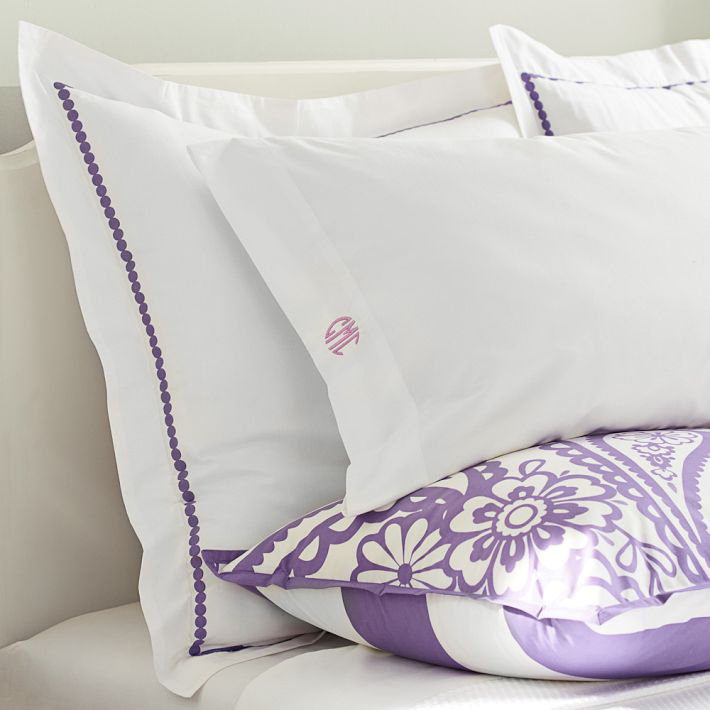You might assume that when I work with clients on a bathroom or kitchen remodeling project, that I am working hand-in-hand with their contractors every step of the way, but that is not always the case. Due to the overwhelming volume of options on the market, it’s quite common for people to see the value in hiring a designer to help them make selections for things like tile, countertops, cabinetry, paint, lighting, and flooring. But then a fair number of them move on to the contracting and remodeling phase on their own, thinking that they can manage the rest of the project themselves and save a little money on design fees. They have all of the names of the tiles and the right grout and paint colors–a designer’s work is done, right?
Sort of.
It’s absolutely my clients’ prerogative to liaise directly with their contractors and I will always relinquish control of the outcome if a client wants to go that route. After all, I am a budget-minded girl and I don’t have to live in the house, so I never take it personally if a client takes over that part of the process. But if tile is involved, I recommend to my clients that they schedule a design consultation between me and their tilesetter before anything gets cemented down–and you should do this with your designer, too.
Why? Because there is so much room for error when it comes to communicating tile design and it seems like every tilesetter has their own routines and habits where tile design is concerned. They may project those habits and routines onto your shower walls or floors without thinking for a minute that you might have an expectation of something different. Case in point, this morning I met with a contractor who is simultaneously remodeling two bathrooms for my client, and since we are using two types of tile in the tub surround of one of the bathrooms–a large rectangular white tile with a faint trellis pattern on it and a charcoal gray penny tile–he assumed we wanted to incorporate a thick, horizontal band of the penny tile at eye level and fill the rest of the walls with white tile. After all, that is very commonly done, right? He’s done it hundreds of times and it ends up looking great! In some cases, that would be just fine, not a horrible way to go at all. But this particular bathroom is going to be used by a four-year old girl. A thick band of charcoal gray would just be too heavy in there, and it would end up looking much more masculine than we would ever want it to be. My original idea was to alternate a row of large white rectangles with a single row of the penny tiles. This would give us a daintier look–much lighter and more feminine than a big swath of MAN GRAY.
Unfortunately, while this contractor was juggling all of the intricate details of two bathroom remodeling projects, with six different types of tile and multiple paint colors and lighting for this and hardware for that, the original tile design that we came up with in the tile store when the client and I were shopping together two months ago slipped through the cracks with the contractor. If I hadn’t been there today to clear up this misunderstanding, my client would have come back from vacation to a new bathroom that would have probably caused her to crinkle up her nose in disappointment every time she laid eyes on it for the next fifteen years.
Even after I explained what we wanted to the tilesetter, he projected his routines onto the project. “Two rows of penny tiles between each row of white tile, right?” he asked. “No, I want a single row of pennies,” I explained again. “That’s not going to look good,” he protested. “You let me worry about that,” I told him. I know he means well, but he doesn’t understand the subtlety I’m after. Two rows of penny tiles between the white tiles would still end up looking heavy. I want a delicate dot pattern, surrounded by white–like this dotted bedding:
Again, he was just projecting his own personal taste onto the project, and thinking “bathroom,” period. He’s not taking other big picture things into consideration, like how this bathroom will be used by a small girl, or how this particular home in this particular neighborhood needs a more custom, upscale look to be competitive where resale value is concerned.
Fortunately for my client, I’m thinking about those things. As a designer, that’s my job.
So that’s one pre-tilesetting tile-tastrophe averted. Phew! Yay! We’re done, right?
Not necessarily. There’s also a post-tilesetting tile-tastrophe to worry about. Lucky for you, your designer can help you avoid that one, too.
Now you’re looking at your computer screen and wondering, why is it worth another design fee for my designer to come out a second time to look at the tile?
The truth is, there are many, many tilesetters out there, with varying degrees of skill. In the ten years I’ve been in this business, I have only worked with two tilesetters who got it right the first time. Every other job has had obvious flaws–tiles are skewed, or corners aren’t mitered where they should have been, or maybe there’s too big a gap between two sheets of mosaic tile–and these flaws become more obvious and totally unfixable after the tile has been grouted. So in a perfect world, your designer should come back to look at the tile after it’s been set down but before it’s grouted. There is still some wiggle room with making minor changes at this stage of the game. Better to catch the little things here before you’re really stuck with them.
Another bonus to having your designer in the game, should modifications be necessary? They can do the dirty work of confronting a contractor who has done a sloppy job. Let your designer play the bad cop–we designers are more than happy to do whatever we need to do to ensure that you get the most bang from your home improvement buck. It’s our job to be laser-focused on the aesthetics of your project and your contractor knows that we have the experience to know what’s a reasonable request or expectation and what’s not. Plus, most contractors want to protect the relationship with a designer even more than their relationship with the client, because a designer represents many more referrals. So as a general rule, they’re more willing to step up and correct their mistakes if that income potential is threatened.
I can’t wait to see/share the “after” version of this bathroom–we’re combining that white and gray tile with a sunshine yellow on the walls for a supersweet bathroom that can grow with this young girl right into her teen years!
Call or text us at (512) 797-5821 if you’d like a Room Fu designer to help you avoid a tile-tastrophe!




Leave A Comment